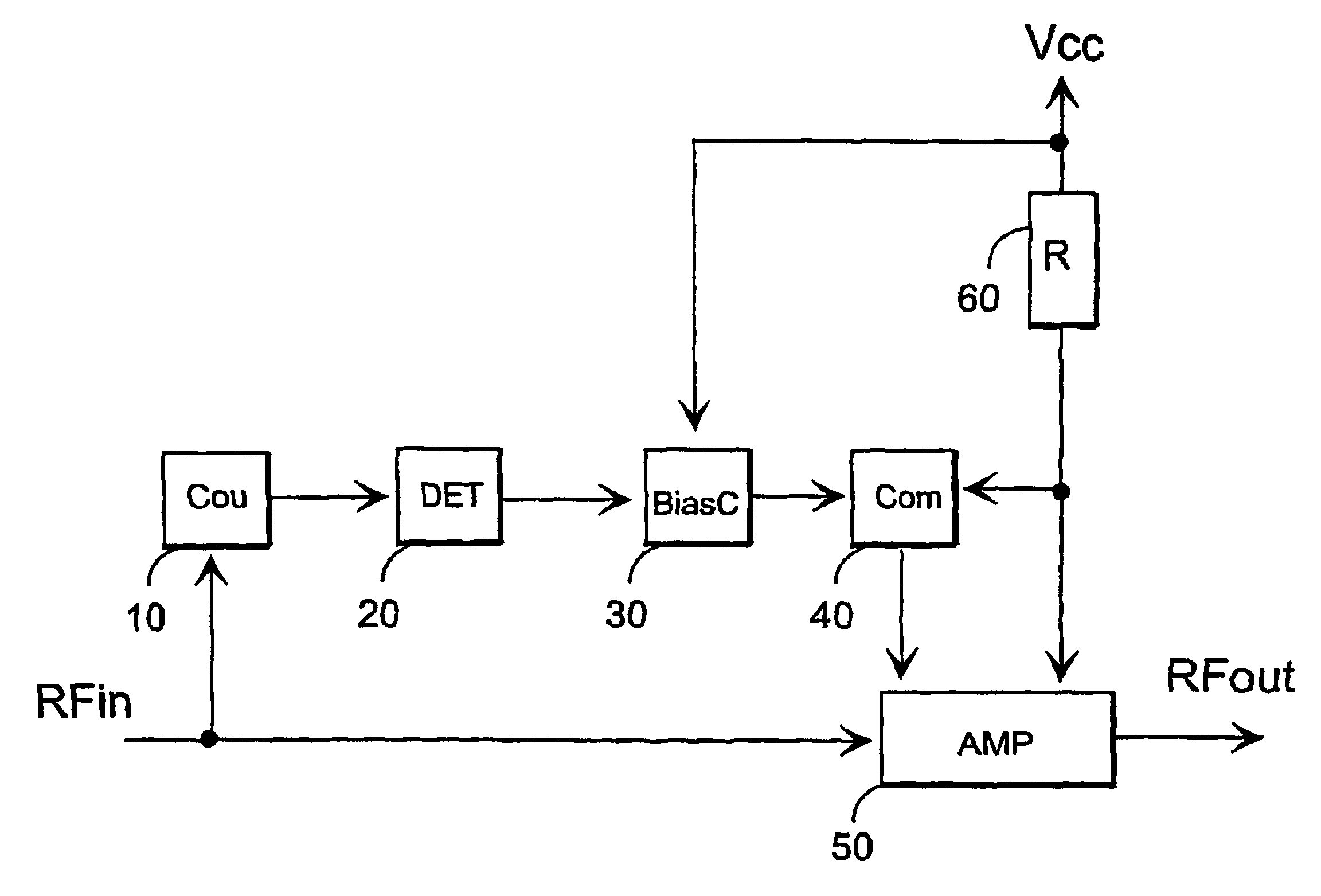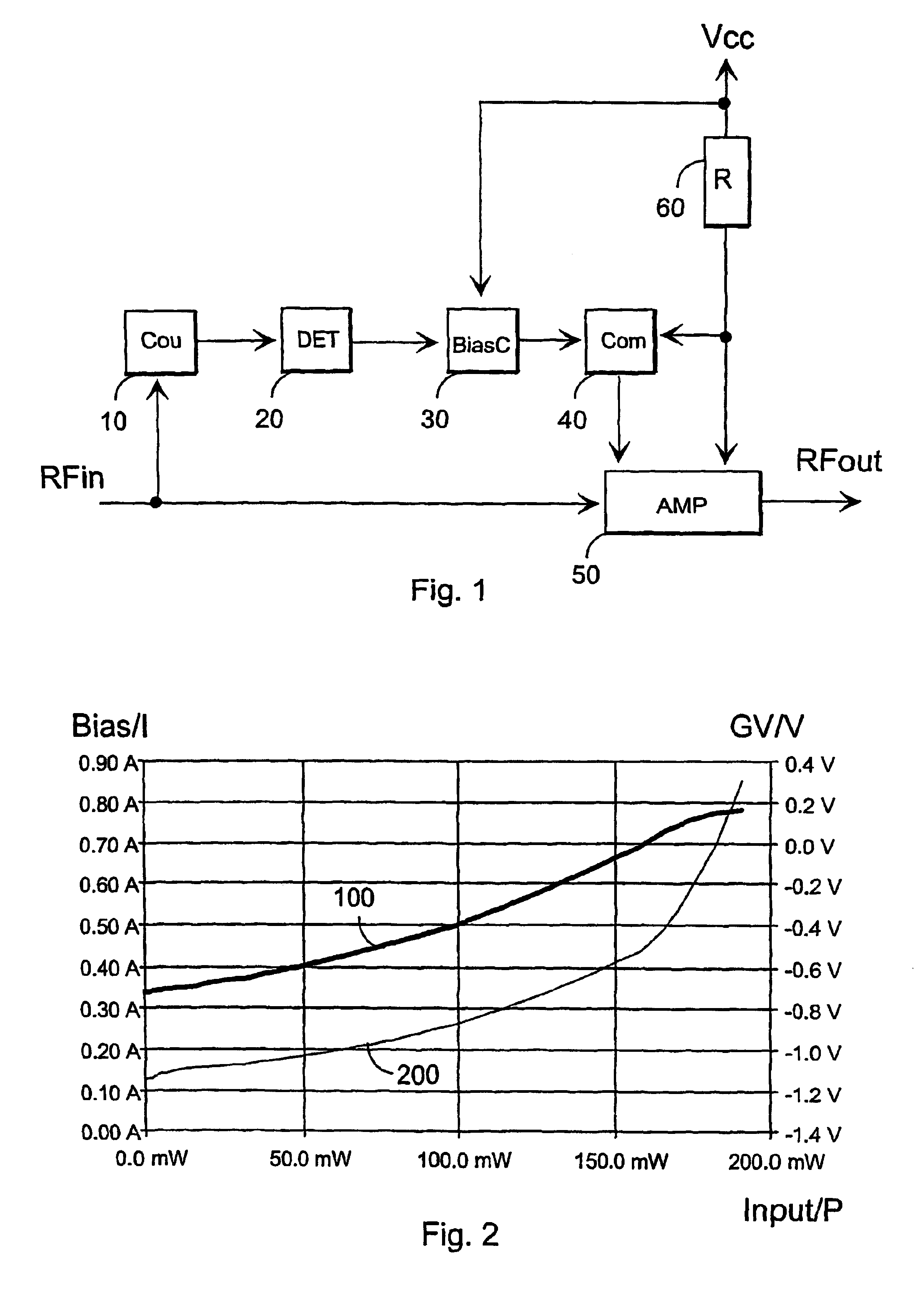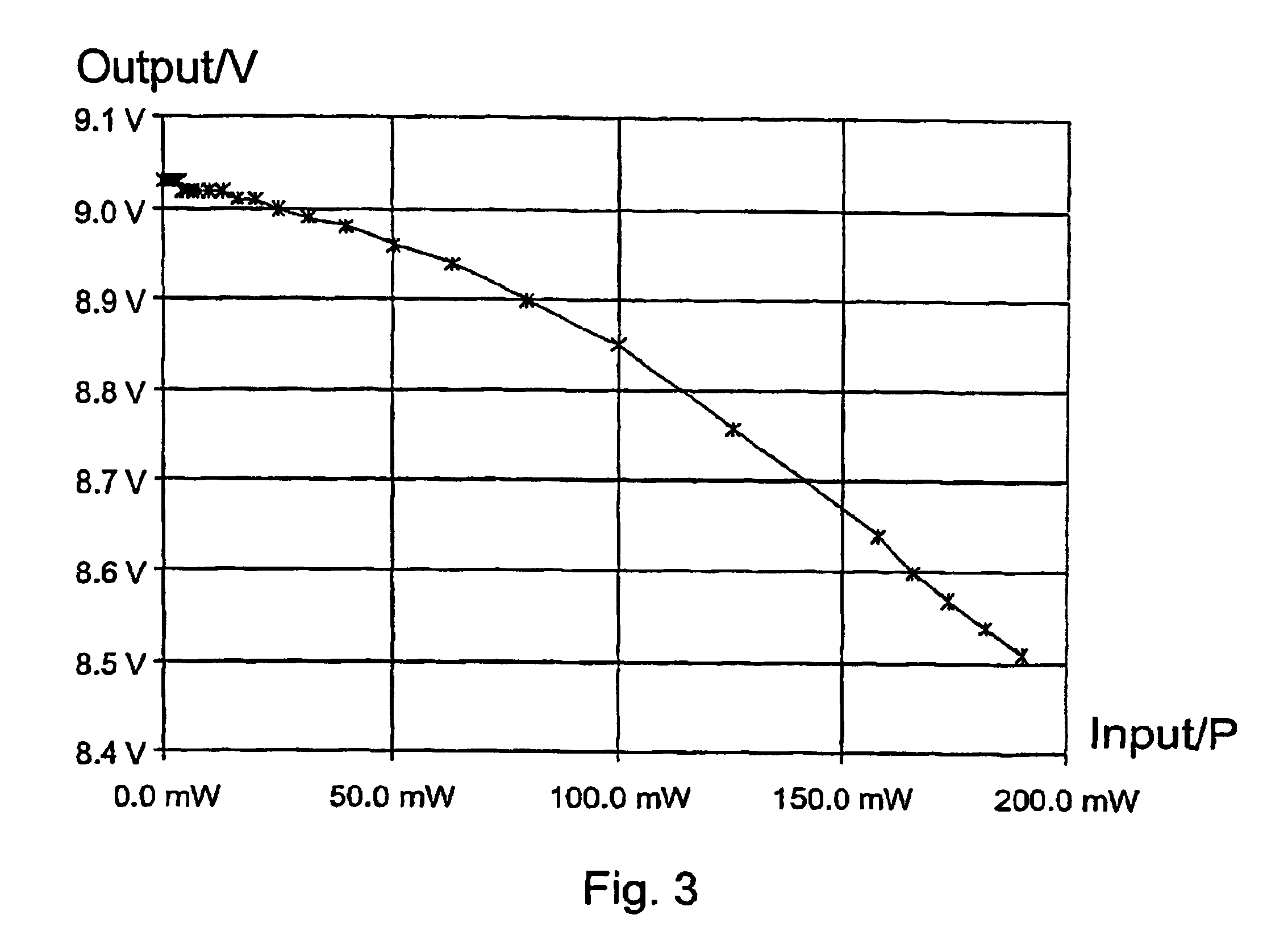Linearization method and amplifier arrangement
a linearization method and amplifier technology, applied in amplifiers, gain control, electrical equipment, etc., can solve the problems of not being optically suitable for use in amplifiers amplifying high frequency signals, linearization methods based on feedback are not particularly suitable for effective amplifier stages, and the solution disclosed is relatively complex to implement, so as to reduce the arrangement is simple and cost-effective to implement, and the effect of reducing the heat produced by the amplifier
- Summary
- Abstract
- Description
- Claims
- Application Information
AI Technical Summary
Benefits of technology
Problems solved by technology
Method used
Image
Examples
Embodiment Construction
[0020]Referring to FIG. 1, an amplifier arrangement comprises a coupling device 10, a sampling device 20, a control device 30, an adjusting device 40, an amplifier 50 and a resistor 60. The amplifier arrangement is arranged to linearize an amplifier for a signal with a variable envelope.
[0021]The figure shows that an RF input signal is conveyed to the input of the amplifier 50, the RF input signal being amplified into an RF output signal in the amplifier. The signal applied to the input of the amplifier 50 has a variable envelope. The linearization method is suitable for use in amplifiers amplifying signals having power peaks much greater than an average power. Such signals occur e.g. in RF signals broadband-modulated using e.g. OFDMA or CDMA methods.
[0022]In the following, the invention is applied to the amplifier 50 meeting the criteria set for a so-called class A amplifier. Typically, a class A amplifier is extremely linear. The amplifier 50 shown in FIG. 1 can be implemented e.g...
PUM
 Login to View More
Login to View More Abstract
Description
Claims
Application Information
 Login to View More
Login to View More - R&D
- Intellectual Property
- Life Sciences
- Materials
- Tech Scout
- Unparalleled Data Quality
- Higher Quality Content
- 60% Fewer Hallucinations
Browse by: Latest US Patents, China's latest patents, Technical Efficacy Thesaurus, Application Domain, Technology Topic, Popular Technical Reports.
© 2025 PatSnap. All rights reserved.Legal|Privacy policy|Modern Slavery Act Transparency Statement|Sitemap|About US| Contact US: help@patsnap.com



